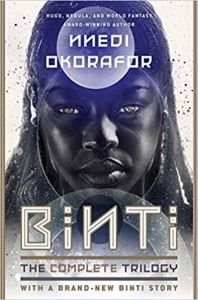

The theme of the inner conflict of adherence to what is native, to tradition and roots (or in this case, to tribalism), while wanting to connect with the world of the coloniser, is a consistent theme throughout the book. This is often represented in her relationship to her otjize, the red clay she uses to bathe and color her skin and her hair. She struggles between wanting to depart from her culture and feeling deeply bound to it. She ruminates over the potential consequences her departure will entail, which could mean that she cannot return home ever again. At the same time, she feels guilty and fears leaving her family and land behind. Binti knows she has the potential and the courage to step outside and have access to the resources that have been denied to her as Himba girl. Faced with this situation, Binti must learn not only how to survive, but how to understand what lies behind the atrocious acts of the Meduse, and how to prevent an impending full-scale war.īinti is a true child of the crossroads, she longs to know the secrets of other forms of knowledge, a learning which is denied to her by her tribe.

The edan not only protects her, it enables her to communicate with the Meduse invaders. Binti is saved from certain death by an old and mysterious bauble, which she refers to as her edan. These warrior-like beings are set on revenge since something incredibly valuable to them was once stolen by research professors in Oomza University. Once she is onboard the ship that is supposed to take her to her dream destination, another form of life, the Meduse, board the ship and kill everyone on board save her and the pilot. In doing so, she transgresses her family and culture’s taboos against the other, and becomes an other herself.īinti’s journey takes an unexpected turn.

Binti embarks on a journey, which she hopes will lead her to fulfill her dreams of studying at Oomza University (a planet somewhere in the distant universe). One morning, well before her family awakens, she swallows her fears and, against her family’s wishes, she sneaks out on her transporter. And it considers what happens when the societies of oppressed and oppressor come into contact with one another.īinti Ekeopara Zuzu Dambu Kapie of Namib is a sixteen year old Himba girl, the youngest child in a family of nine. It reflects on the roles of tradition, culture, family, and heritage in relation to the evolving self. Binti explores reparation, integration, loss, inner and outer conflict, and the search for harmony between cultures and inside the self. It explores what happens when the transformative journey of a new generation encounters the other, in two different societies: one, the oppressed, and the other (the oppressor). Nnedi Okorafor’s Binti is a sci-fi novel infused with themes of postcolonial studies.


 0 kommentar(er)
0 kommentar(er)
